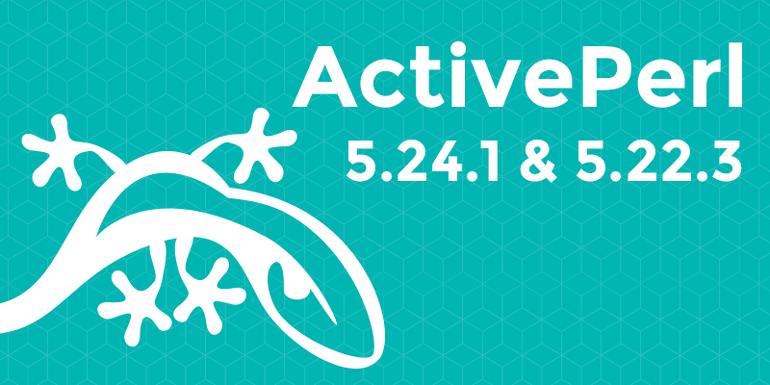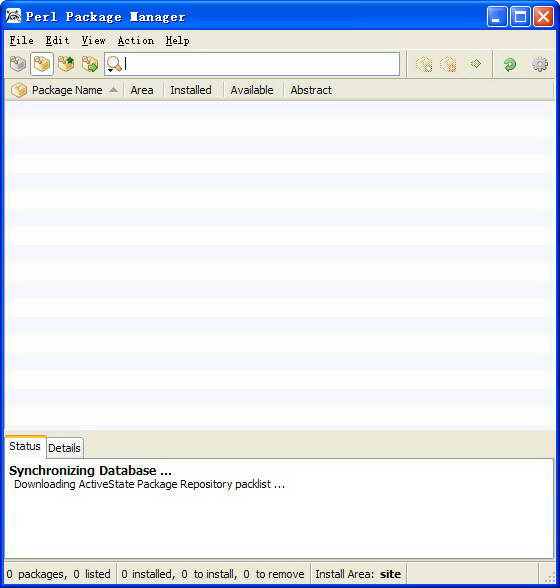
- #ACTIVEPERL INSTALL MODULE HOW TO#
- #ACTIVEPERL INSTALL MODULE INSTALL#
- #ACTIVEPERL INSTALL MODULE MANUAL#
Only the standard http_proxy variable is used. This information was true for the old PPM3 client and is no longer correct. Many places on the net explain that the environment variables http_proxy_user and http_prox_pass need to be set. The syntax for setting the variable depends on the shell for the Unix bash shell it looks like this: export http_proxy= Īnd for cmd.exe on Windows it looks like this: set http_proxy= common error is to leave out the protocol prefix (“ or “ from the variable setting, in which case it will not work at all.
#ACTIVEPERL INSTALL MODULE HOW TO#
If internet access must go through a proxy server, then the http_proxy environment variable must be set to tell LWP how to get a connection. PPM uses the LWP module to access the ActiveState package repository. Note that currently only the Windows platform has additional third-party PPM repositories. In the PPM GUI these additional repositories are included in the Preferences dialog in the Suggesteddropdown list: You can display the available repositories for your platform with the `ppm repo suggest` command and then add them to your PPM configuration using their shortcut names: ppm repo suggest PPM includes a list of public repositories, including the architectures they support.
#ACTIVEPERL INSTALL MODULE MANUAL#
If you are ready to push your Perl scripts to production servers and are looking to meet your commercial support requirements, consider downloading ActivePerl on the ActiveState Platform.Įven modules that failed to build on the automated ActiveState build system may still be installable via PPM: There are several other people maintaining additional PPM repositories, and often they go and spend the required manual effort to get these modules building. The module passes all of its own regression tests.All required prerequisite modules are available.The generated binaries will be added to the PPM repositories if:
#ACTIVEPERL INSTALL MODULE INSTALL#
To install the DBD-mysql database driver all you have to do is run the ppm install command:Īlternatively you can run ppm without any parameters to invoke the GUI, search for DBD-mysql, select the DBD-mysql package, and perform the installation:ĪctiveState downloads all new packages from CPAN once a day and tries to build them for each supported platform. USING THE PERL PACKAGE MANAGERĪctiveState maintains repositories of precompiled CPAN packages that can be installed with either the PPM command-line client, or the PPM GUI application. For earlier versions details may be different. The following information is accurate for ActivePerl 5.8.9.827, 5. All it takes is a simple command like this: ppm install Crypt::Blowfish


You can either download pre-compiled binaries with the Perl Package Manager (PPM) or you can build and install the modules yourself with the regular Perl tools, like the CPAN shell.

Sooner or later you will want to use additional modules from CPAN that are not already included. ĪctivePerl already includes many modules for common tasks like accessing databases, using network services, parsing XML files, compressing and decompressing data, or creating GUI applications. You can try it for yourself by installing Perl 5.32, or else let us show you how it works.į or information on how to install CPAN modules on ActivePerl 5.18 and prior, read the blog Installing CPAN modules on ActivePerl 5.18 or Later. April 2021 Update: PPM has been replaced with the ActiveState Platform, which enhances PPM’s build and deploy capabilities.


 0 kommentar(er)
0 kommentar(er)
